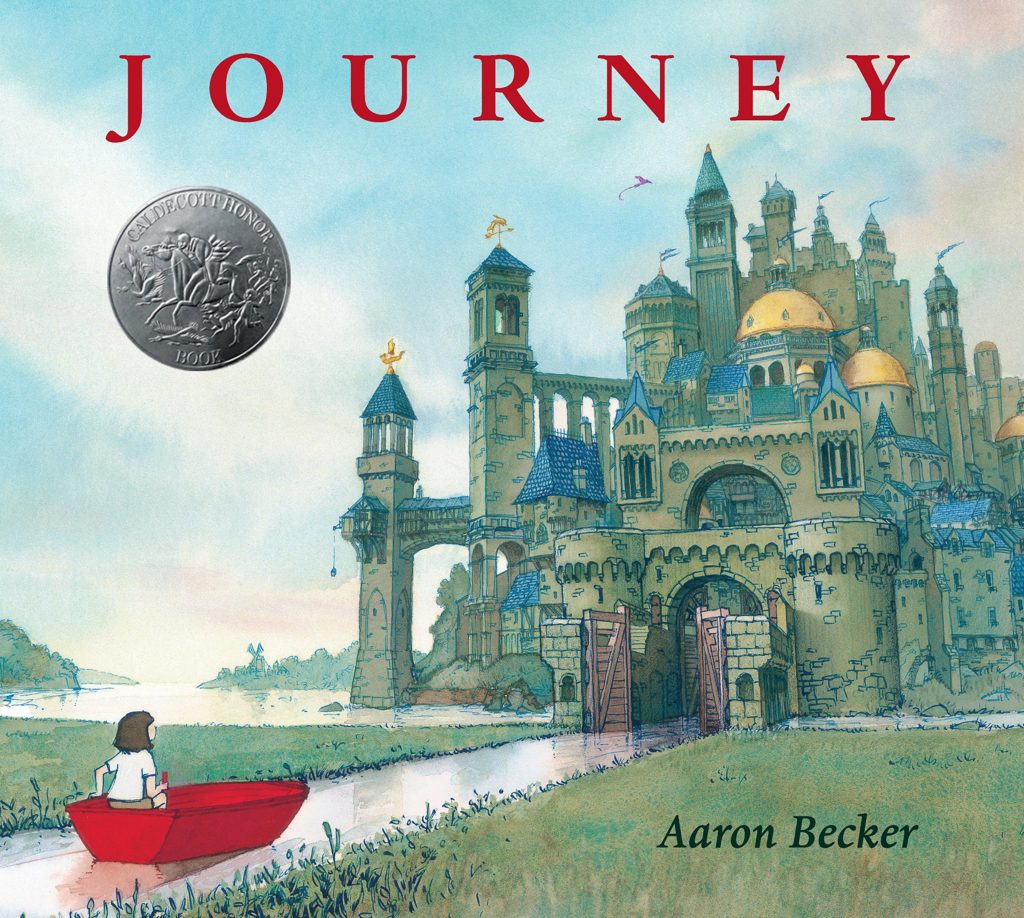Take 1:
Summer vacation is winding down, and if you haven’t already found yourself back in a classroom, you probably will in the very near future!
Take 2:
Summer vacation is OVER! In fact, it’s long gone, and we are fully into Fall!
As you can see, when I started this post, I had good intentions of having it written and published before the start of the school year…Well, life happened, and between diaper changing, night nursing, potty training, and new job starting (my husband, not me!), let’s just say we’ve been a bit busy.
I hope your school year is off to a great start so far, and to help you start the year off right, I’m celebrating with an introduction to one of my favorite types of books…The kind with no words in them.
I LOVE wordless books. A well-told visual story is enchanting and enjoyable on so many levels, and many of these have some of the most intricate, fascinating art I’ve ever seen. But besides all that, they are excellent teaching tools!
This week, I’m sharing some ideas for how to use wordless (and nearly wordless) books in your classroom. In an upcoming post, I’ll be sharing some of my favorite wordless books, but I hope you already have some of your own to choose from in the meantime! So, without further ado…
7 Ways to Use Wordless Books:
- Talk about it, talk about it, talk about it. Wordless books are a gift to language teachers. I could do a whole separate post on this single point! Whether you are teaching young children to speak their native language or teaching older children (and adults!) another language (ANY language), you can use wordless books. Build vocabulary by describing what is happening in the story. Tell the story again and again, and emphasize whatever new language structures you are learning with each new “reading”. For example, if you are focusing on clothing, tell the story and include descriptions about what characters are wearing. If you are focusing on verbs, choose specific, descriptive words to tell what is happening in each picture. Encourage students to tell the story – as a whole class, to you, to each other.
- Teach inferencing. When a book depends on pictures to tell the story, there are ample opportunities to infer. Ask questions like “How does (character) feel? Why do you think (character) feels (happy, sad, mad, etc.)? What clues told you (character) feels that way?” This activity works for everyone. Teach your first graders about inferencing or teach your twelfth graders about inferencing. Those twelfth graders can practice inferencing with picture books and apply their newly refined skills to the novels they are reading.
- Write it out. Have students write the story. As with speaking, you can focus students on a specific device or concept. For example, if you are learning about similes and metaphors, encourage students to use them in their writing. If you are learning about voice or perspective, encourage students to write various versions of the story using different “narrators”. If you are learning about point of view, have students write versions of the story in first, second, and third person and compare the results!
- Practice sequencing. After reading a wordless book, have students put pictures from the story in order. Encourage them to tell the story to each other using words like first, then, and next.
- Study story structure. With or without words, picture books are great tools to use for teaching and comparing story structure. Collect several wordless books and put your class to work comparing and contrasting the story structures found in each. You could do this as a whole class or in small groups. As an extension ask the following questions: “Which story structures seem to work best in wordless books? Why do you think so? Which common story structures (if any) do you think wouldn’t work as well for wordless books? Why?”
- Appreciate the art. Take some time to explore the different mediums and styles found in different wordless books. Discuss and evaluate the choices illustrators made for each book. Ask questions like: “Why do you think the illustrator chose to use ____ in this book? How would the story feel different if the illustrator had chosen a different style or medium? Which styles/mediums do you think would work well to tell this story? Are there any styles or mediums that wouldn’t be as effective? Why do you think that? If you were the illustrator, which style/medium would you have chosen for this book? Why?” *Extension: Compare the styles/mediums found in wordless books to those in traditional picture books. Do you see any trends? Differences?
- Explore themes, relationships, and emotions. The content of each book will drive these discussions. As I share some of my favorites with you, I’ll try to highlight some of the possibilities for each. I think you and your students will find several of these wordless wonders powerful, tear-provoking, and awe-inspiring.
That’s all for today. Now get out there and put some wordless books to work!
Your turn! Do you enjoy wordless books? Why or why not? How do you use them?
